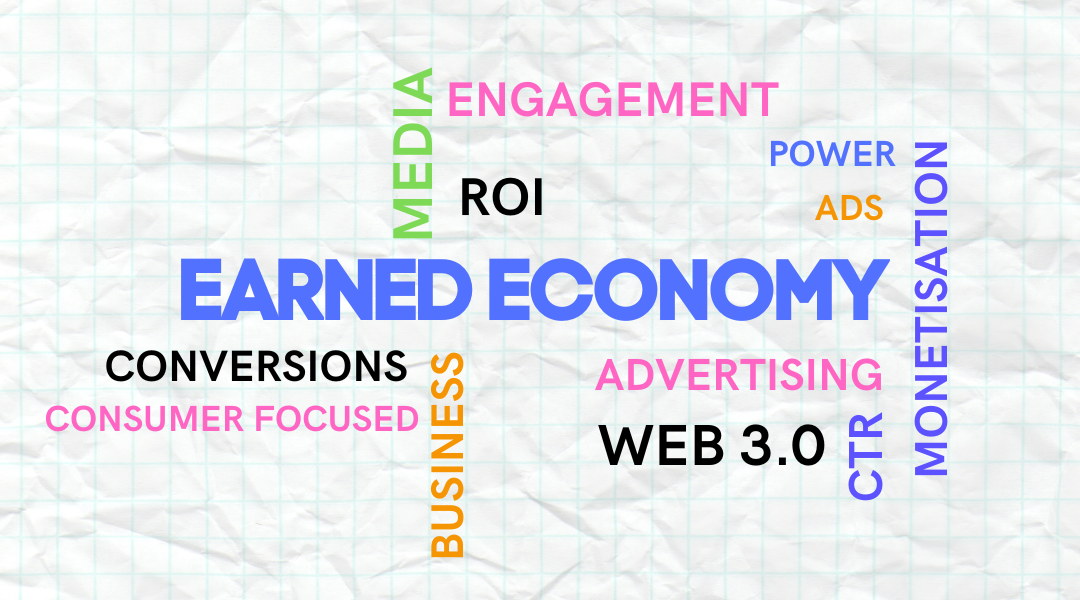
The Earned Economy
Advertising Industry
Consumers all around the world will switch on to the power of their attention. The Earned economy empowers consumers to monetise their attention. This is a new model for advertising that uses a highly targeted, authentic, and engaging approach to get more people to pay attention not just for a few seconds, but for as long as the viewer is engaged and benefits. It’s a way for brands to create positive interactions with their potential customers, taking their product or services from awareness through to sale in a uniquely win-win relationship.
In the past decade, we have witnessed a shift in consumer behaviour, accelerated by Web 3.0, decentralisation and DeFi. Consumers are waking up to their freedom of choice and their innate consumer power. Today, consumers are looking for brands that can help them make sense of the information overload they face on a daily basis. The solution to this problem lies in creating a new kind of engagement that allows consumers to be in control of their attention and be fairly compensated, instead of being bombarded with traditional marketing communications.
In 2022, consumers will be more willing than ever to trade their attention for value in the form of money, rewards, or free products. Consumers around the world will switch on to the power of their attention, which is shifting from one-way communication from brands, to a two-way engagement with “compensation payments”.
The Earned Economy empowers consumers to monetise their attention. A powerful tool that brands can use as an alternative to traditional marketing communications such as advertising; direct mail; and email marketing – all of which are being ignored by overstuffed mailboxes, ad blindness, and email overload respectively. While these channels have lost their effectiveness, earned media will develop as the consumer takes back control.
Attention is the most valuable currency in the world. But consumers and the industry alike have been slow to recognise where the power really sits, largely because it still operates on an unearned revenue model. In a world where advertisers pay for access to eyeballs, the power of attention has been left in the hands of media companies rather than individual content consumers.
Now, advances in technology, new thinking stimulated by Web 3.0 has opened the door to a new kind of revenue model based on the “Earned Economy”. This new model will empower consumers and ensure that value exchange is at the heart of every business transaction involving consumers’ attention.

